Growing and Caring for Clematis Vine
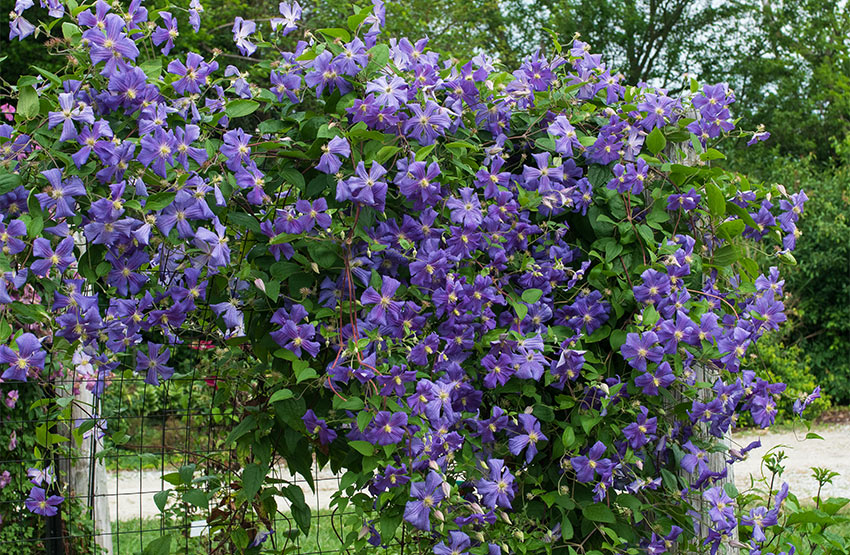
Clematis vines, also known as Clematis spp., are cherished in gardens worldwide for their vibrant, showy flowers and wide variety of species. Whether you're a seasoned gardener or a beginner, this guide will provide you with all the essential information to grow and maintain healthy clematis vines. From understanding the types to learning optimal planting techniques, you'll have everything you need to ensure a stunning clematis display in your garden.
Understanding Clematis Vine
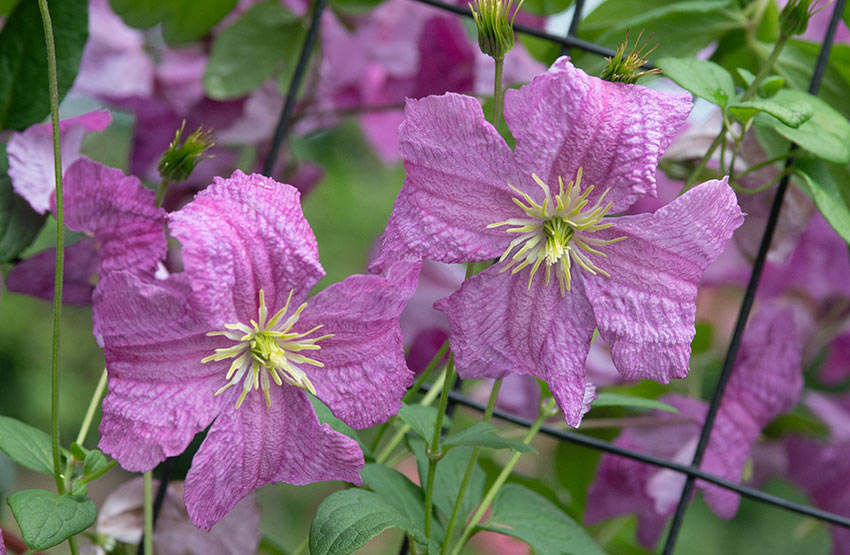
Clematis vines offer incredible diversity, with species native to many parts of the world. In this section, we'll explore the botanical aspects of clematis, helping you better understand the plant.
Botanical Classification
Clematis spp. belongs to the Ranunculaceae family, a group of beautiful, flowering plants that includes over 300 species. Clematis spp. is a diverse genus of flowering vines in the Ranunculaceae family, known for its beautiful and often fragrant blooms.
Understanding its taxonomy helps gardeners identify specific varieties and tailor care practices to meet the plant's needs.
Types of Clematis
Clematis comes in many forms, each offering unique beauty. Some popular types include:
- C. armandii - Known for its evergreen leaves and fragrant white flowers, it blooms in early spring.
- C. alpina - This early bloomer has delicate, nodding flowers in shades of blue, pink, or white.
- C. cirrhosa - A winter-blooming variety, often found in Mediterranean climates, producing pale green or cream-colored flowers.
- C. macropetula - Featuring bell-shaped, lavender to purple flowers, it's a popular choice for spring gardens.
Native Regions
Clematis vines are native to various regions across the globe, including North America, Europe, India, Australia, China, and Japan. Each region brings its own species, contributing to the plant's remarkable variety.
Optimal Growing Conditions

Providing the right environment is crucial for clematis to thrive. This section outlines the ideal conditions, from light to soil and the best planting seasons.
Light Conditions
Clematis vines prefer full sun but benefit from part shade, particularly in hot climates where afternoon shade can prevent scorching. A common rule is "head in the sun, feet in the shade," meaning the base of the plant should be protected from direct sunlight, often achieved by mulching or planting low-growing companion plants.
Soil Conditions
Clematis vines grow best in well-draining soil with a neutral to slightly alkaline pH. Adding organic matter like compost or aged manure can help improve soil fertility and structure, ensuring the plant's roots remain healthy.
Planting Seasons
Spring and fall are the best seasons for planting clematis vines. These cooler months allow the plants to establish roots before the stress of extreme heat or cold. In northern regions, summer planting is possible with extra care, such as consistent watering.
What Zones Can Clematis Grow In?
Clematis thrives in USDA zones 4-9, depending on the species. Learn more about your hardiness zone here.
Planting and Spacing
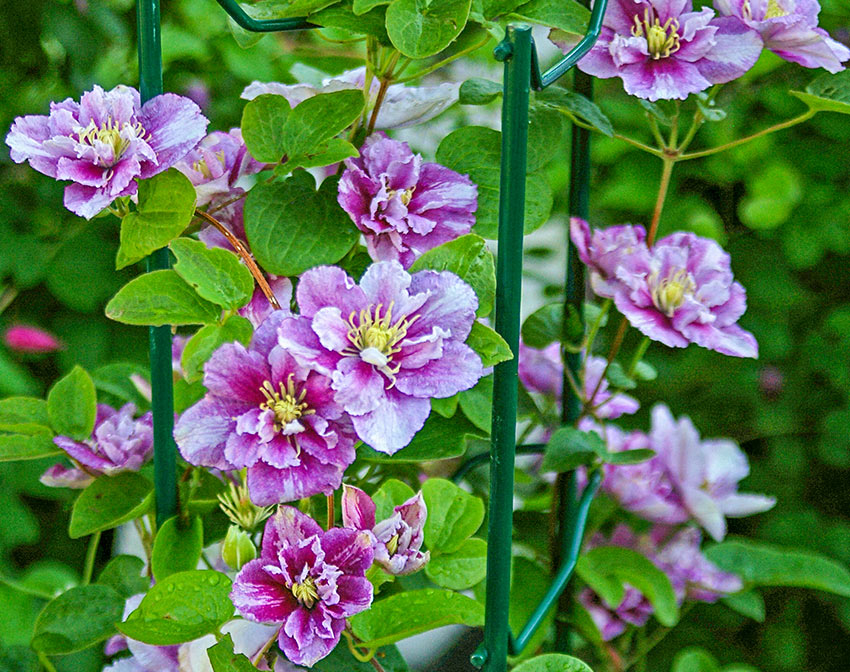
Proper planting techniques and spacing are essential to ensure strong, healthy clematis growth.
Planting Techniques
- Dig a hole twice as wide and deep as the root ball.
- Amend the soil with compost.
- Place the plant in the hole, positioning the crown (where the stem meets the roots) about 2 inches below the soil surface.
- Backfill with soil and water thoroughly.
Plant Spacing
Space clematis plants 24 to 36 inches apart to allow for adequate airflow and growth. Some species are more aggressive climbers, requiring additional spacing.
Container Growth
Many types of clematis can be grown in containers. Choose a large pot, at least 18 inches in diameter, and provide a sturdy trellis or support structure for the plant to climb.
Maintenance and Care
Once planted, clematis vines require regular maintenance to stay healthy and productive.
Watering
Water clematis regularly, ensuring the soil stays consistently moist but not waterlogged. Well-drained soil is key to preventing diseases like clematis wilt, which can cause sudden dieback.
Fertilizing
Feed clematis annually in spring with a balanced organic fertilizer, such as one with a 3-1-2 NPK ratio. Additionally, apply compost to enrich the soil and provide slow-releasing nutrients.
Mulching
Apply mulch around the base of the plant in spring to help retain moisture and keep the roots cool. Be careful not to let the mulch touch the stems, as this can lead to stem rot.
Pruning and Trimming

Different clematis types have varied pruning needs, so it's important to understand the right technique for your plant.
Pruning Techniques
Clematis vines are divided into three pruning groups based on their bloom time. Group 1 blooms on old wood and requires minimal pruning, while Group 2 blooms on both old and new wood, and Group 3 blooms only on new wood, needing hard pruning in late winter or early spring.
Deadheading
Deadheading, or removing spent flowers, can promote additional blooms in certain clematis varieties, particularly those that bloom in spring and early summer.
Managing Pests and Diseases
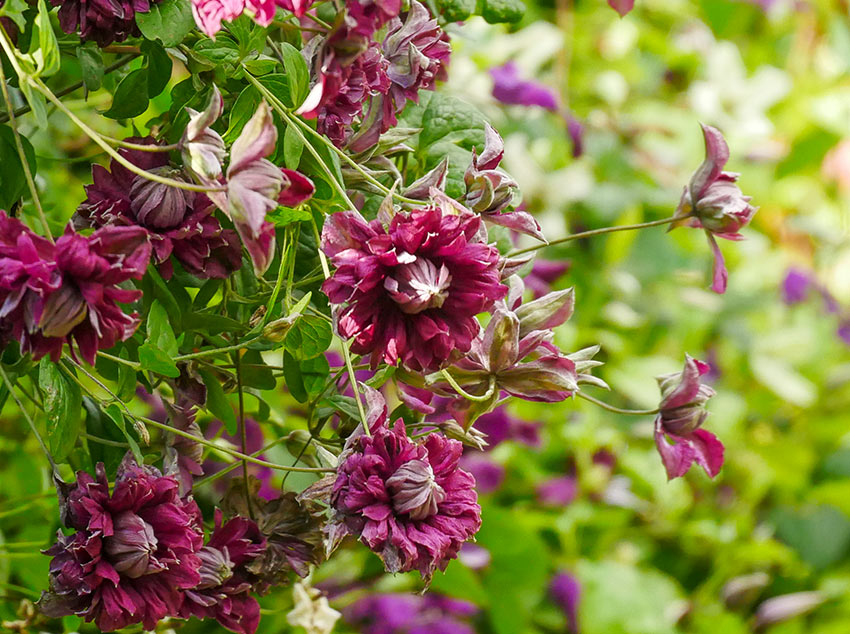
Clematis vines are relatively hardy but can fall victim to pests and diseases.
Common Pests
Aphids, spider mites, and slugs are common pests that can affect clematis. Regularly inspect the plant and use insecticidal soap or neem oil to treat infestations.
Disease Prevention
Prevent clematis diseases, such as wilt and powdery mildew, by maintaining proper soil moisture and ensuring good airflow around the plant.
Disease Treatment
For powdery mildew, a simple solution of baking soda, horticultural oil, and liquid detergent mixed with water can be an effective treatment. Apply it regularly to manage outbreaks.
Transplanting and Dividing
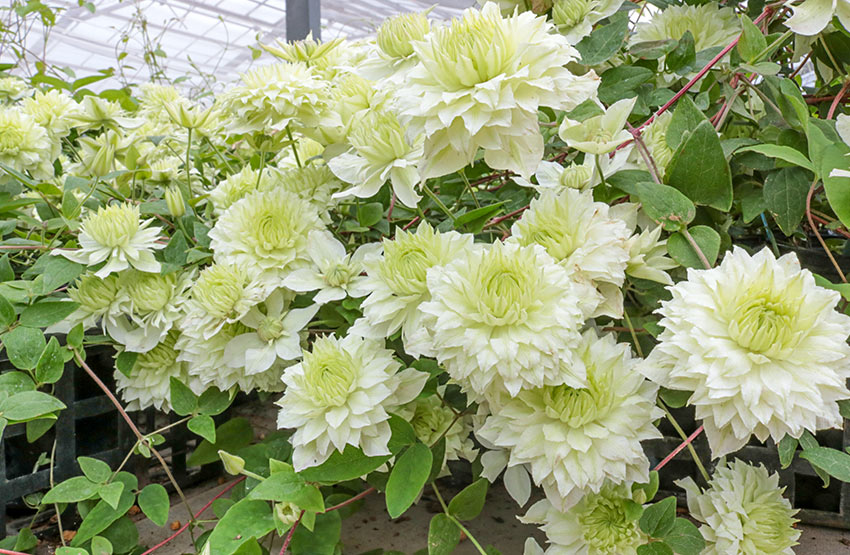
Clematis can be transplanted or divided to propagate new plants and refresh their growth.
Transplanting Tips
Transplant clematis in early spring or fall. Carefully dig around the plant's root system, lifting it from the ground, and replant it in a prepared hole. Treat new divisions like young transplants, ensuring consistent watering until established.
Conclusion
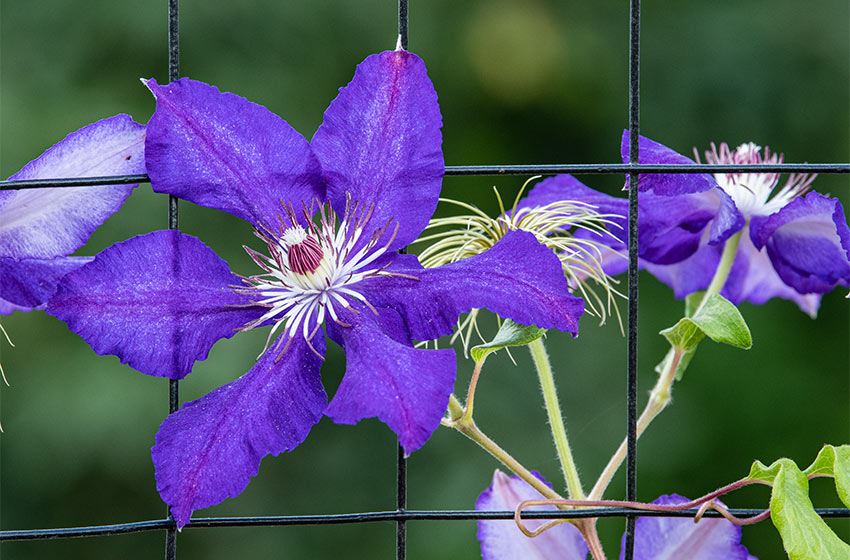
Growing clematis vines requires attention to planting techniques, optimal growing conditions, and regular care. By following the tips provided in this guide, you can enjoy a beautiful clematis vine display that blooms season after season. Remember to mulch, prune, and water correctly to keep your clematis healthy and flourishing.





 Gardens Alive! & Supplies
Gardens Alive! & Supplies






